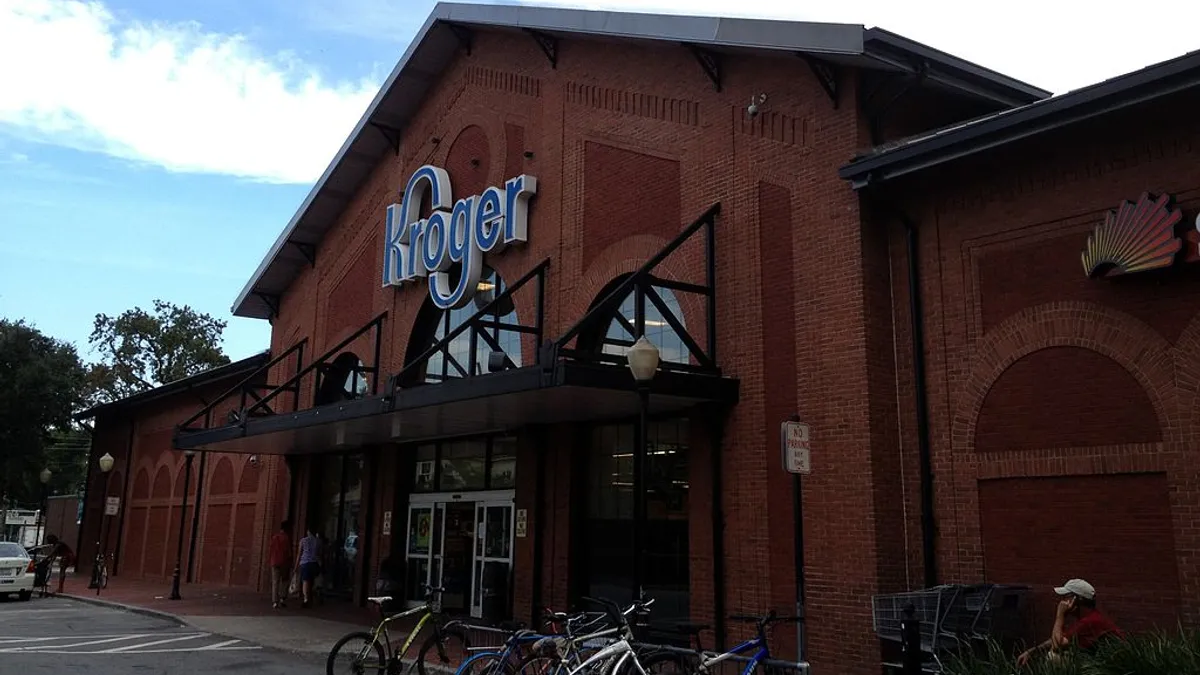Dive Brief:
- Kroger’s Edge digital shelf display technology offers sustainability benefits in addition to a personalized, interactive shopping experience, according to a marketing post from partner Microsoft. The technology will require fewer printed price tags, run on renewable energy and allow stores to turn down their overhead lights.
- According to Microsoft, Edge is designed to use a low-voltage, direct current that meets standards set by the Emerge Alliance, an association that promotes efficient power usage in commercial buildings. The technology also illuminates shelf prices with its digital displays, meaning stores won't require the same intensity of overhead lighting typically used to highlight paper tags, according to Brett Bonner, Kroger's vice president of research and development. Edge coincides with Kroger’s sustainability goals, which include cutting its cumulative electricity consumption by 40% across its entire system.
- The Edge system is currently in 16 stores located near the company's Cincinnati headquarters. It will expand to 120 by the end of this year, Microsoft said.
Dive Insight:
While much has been written about Edge's ability to interact with shoppers through their smartphones — noting when something on their list is available and where, for example — the system’s eco benefits are an added bonus for both the company and its consumers.
Digital labels aren’t necessarily new, but if Kroger’s current pilot is successful, it could have big sustainability, labor and cost implications in the grocery space. Competitors, taking notice, could soon follow. Altierre, a digital tag and sensor maker, estimates that a store requiring 20,000 price displays – each costing about $5 – would provide a labor return on investment in as little as two years. From a sustainability perspective, that return goes even further when considering the paper saved to print so many price tags.
Reducing energy consumption can result in big savings for supermarkets. According to the government's Energy Star program, the average grocery store racks up $200,000 in energy costs per year and puts out carbon emissions equivalent to 360 vehicles. Several chains, ranging from Walmart to Ahold Delhaize's Food Lion, have made sustainability an operational priority.
Kroger is wise to go one step further and promote these environmental benefits through Edge and other technologies. A Nielsen report shows that 66% of consumers are willing to spend more on a sustainably-conscious brand, while 73% of millennials indicate a similar preference.
One challenge will be in getting those customers up to speed on how to effectively use the technology. But adoption should be quick. A new survey shows that consumers want a more innovative supermarket shopping experience. Even in test phase, Edge hits on a number of consumer demands for sustainable, convenient and personal shopping. If the technology rollout continues without much of a hitch, Kroger will not only maintain but potentially gain more loyal customers. Kroger and other grocers using these sustainability practices also would be wise to promote them using store signage, through commercials and in weekly mailers, the last two serving as ways to draw customers who may not be as loyal to the chain to consider visiting their locations.








